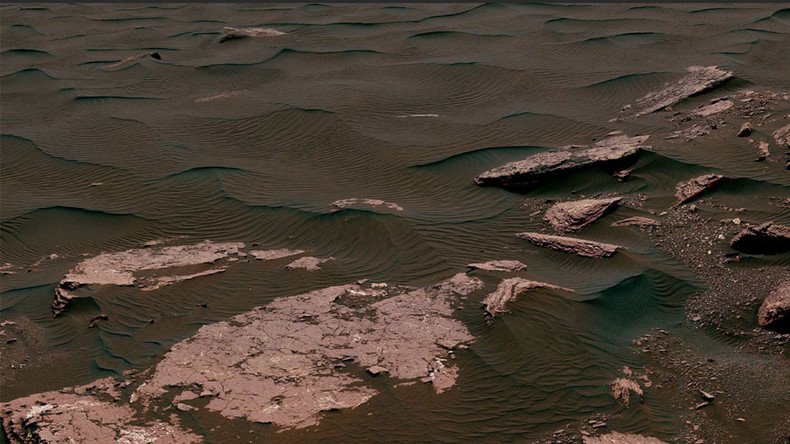Stunning Mars 360 video captures mountains, craters & 'beaches' on Red Planet

Ever wondered how Mars looks through the eyes of the Curiosity rover? NASA has released a new 360-degree video from the robot’s point of view so you can virtually explore the Red Planet's rippled surface without leaving Earth.
The car-sized robot is slowly making its way around Gale crater, examining sand dunes as it attempts to figure out if Mars could ever have supported life.
Between February and April, the rover examined four sites near a linear dune for comparison with crescent-shaped dunes it investigated over a year ago. This is the first close-up study of active dunes on any planet other than Earth.
Change your point of view. Stand with me by rippled dunes on #Mars. (#360video best viewed in the @YouTube app) https://t.co/P1UMNjWu6ipic.twitter.com/WcUeN6Ygzq
— Curiosity Rover (@MarsCuriosity) May 4, 2017
The newly released 360-degree video was captured by the rover's Mast Camera (Mastcam) while looking out over part of an area called Bagnold Dunes. The exact location is called Ogunquit Beach, located on the northwestern flank of the 5.5km-tall (3.3 miles) Mount Sharp.
The video offers a fascinating view of the linear dunes, with medium and small-scale ripples, and of bedrock composed of sediment deposited in Martian lakes billions of years ago.

Mount Sharp, the Vera Rubin Ridge and Gale crater's rim can be seen in the background of the new footage.
This 360 degree video was pieced together from 115 individual images snapped in late March during the rover's 1,647th Martian day on the Red Planet.
Among the questions this Martian dune investigation is hoping to answer is how winds shape dunes that are relatively close together, on the same side of the same mountain, into different patterns.
"At these linear dunes, the wind regime is more complicated than at the crescent dunes we studied earlier," explained Mathieu Lapotre of Caltech, who helped lead the Curiosity science team's planning for the dune campaign. "There seems to be more contribution from the wind coming down the slope of the mountain here compared with the crescent dunes farther north.”
Have sand, will travel. I'm toting a sample for analysis from rippled Martian dunes as I climb farther up Mt Sharp https://t.co/Mq9zU5Gr6Epic.twitter.com/ski64hAcs1
— Curiosity Rover (@MarsCuriosity) May 4, 2017
Curiosity landed near Mount Sharp in August 2012 and reached the base of the mountain in 2014. Before beginning to scale the mountain it found evidence that ancient Martian lakes offered conditions favorable for microbes if Mars ever supported life.
NASA hopes the rover will shed some light on how and when these potential ancient former habitats evolved into the much drier conditions seen on Mars today.












